Sometimes it seems like photography is just one big repository for acronyms. We buy a new lens, it is sold with OS or VR. Our cameras have very high ISO settings, even our filters can be NDs. Today, for those who don’t know their CMOS from their EVIL we are giving you a brief guide to some of the most common acronyms you might find on the buttons, dials and menus of your cameras.
| AE-L and AF-L | Often found together on a button on your camera body, the former is Auto Exposure Lock and the latter Auto Focus Lock. Depending on how your camera is set up, pressing and holding this button before shooting will lock exposure, focus or both. |
| AF | Autofocus. In-built camera system that will automatically focus the lens. On most interchangeable lens system, there is a switch on the lens to change between AF and MF (Manual Focus) |
| ASA | An older, more film based acronym for film speed. Largely replaced by ISO in digital photography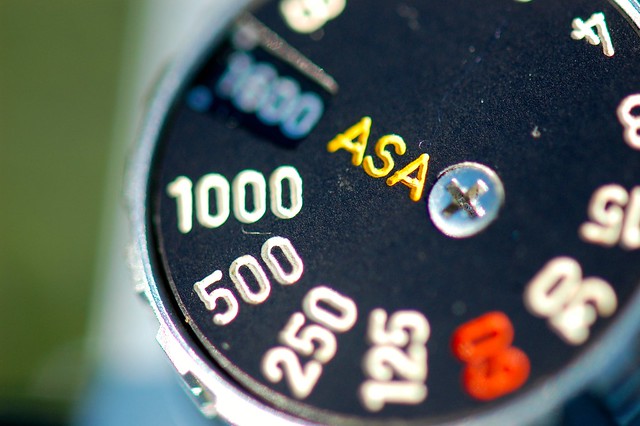 ASA Dial on a Fim Camera. Photo by Steve Snodgrass |
| Av | Sometimes seen as just A, this is often found on the shooting mode dial on top of your camera. It means Aperture Priority and is a mode where the photographer manually sets aperture and the camera will calculate shutter speed. |
| AWB | Auto White Balance. With this setting you camera will automatically determine the color of the light reaching the sensor |
| CP or CPL | Circular Polarising filter. A filter that can cut out reflections in water and glass and boost the saturation of colors. A Circular Polarizer. Photo by Emilian Robert Vicol |
| CSC | Compact System Camera. A generic name given to mirrorless and micro 4/3rds cameras with interchangeable lenses |
| DoF | Depth of Field. The amount of an image that is in focus in front of and behind the actual point of focus. More advanced cameras will have a DoF button |
| DSLR | Digital Single Lens Reflex. The most common form of advanced camera. Uses a mirror and a pentaprism to direct the light from the lens into the viewfinder.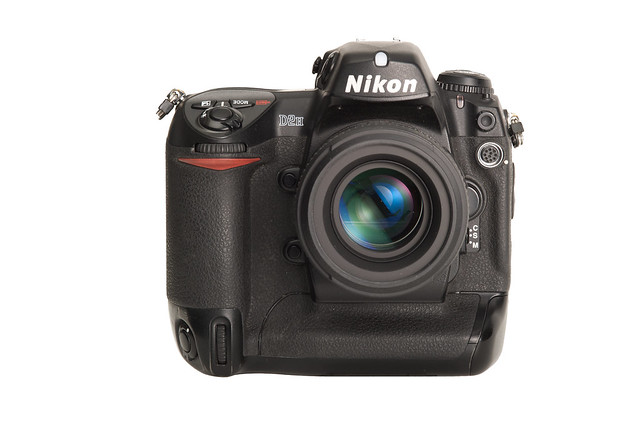 A Nikon DSLR. Photo by Florenz Kley |
| EV | Exposure Value. The system for determining the correct exposure of an image. Controlled by shutter speed, aperture and ISO. It is found on some cameras as part of the exposure compensation dial or auto bracketing. |
| EVIL | Electronic Viewfinder Interchangeable Lens. A name given to the electronic rather than optical viewfinders often found on CSCs An optional electronic viewfinder. Photo by Wolfgang Lonien |
| Exif | Exchangeable Image File Format. A file that sits inside a JPEG or RAW file and provides data about the camera, lens, exposure and other data about the shot. |
| f | F-Stop – The number that tells us the amount that a camera’s aperture is open by. Lower numbers mean wider apertures, higher numbers smaller apertures |
| GN | Guide Number. Found on external flash guns, the GN gives the user an indication of how powerful the flash gun is. |
| HDR | High Dynamic Range. Found as a setting in some cameras but more commonly as a post-production technique. It uses images of different exposures to expand the tonal range of light that a sensor can see.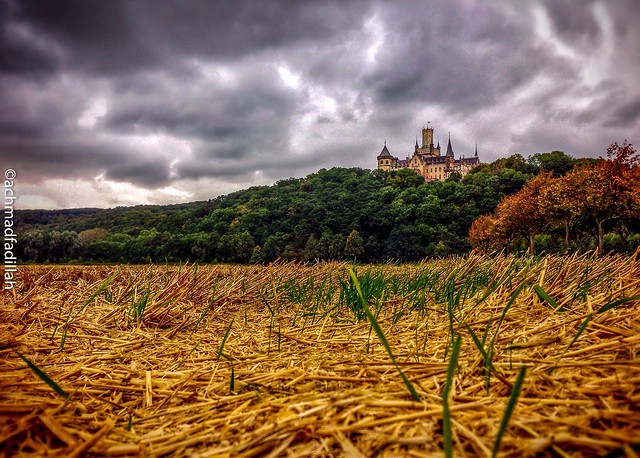 A high dynamic range shot. Photo by Achmad Fadillah |
| ISO | Originally a figure that donated the sensitivity of film to light, it is more often used these days to denote a sensors sensitivity to light. Lower figure are less sensitive but higher quality. As the number increases, the sensitivity increases but at the expense fo extra image noise |
| JPEG | Joint Photographic Experts Group. This acronym defines the most common compressed file type for images. All cameras have the option to shoot JPEG files. It is often further abbreviated to the file type JPG |
| LCD | Liquid Crystal Display. Can be the display monitor of your camera but also, on some cameras, information displays found on the top plate |
| MF | Manual Focus. Often found on the barrel of a lens, switching to MF allows the photographer to manually focus the lens. Often electronic focus information is provided in the viewfinder |
| NR | Noise Reduction. Found in the menu system of most cameras noise reduction is used to reduce the amount of noise in images taken with high ISO or with long shutter speeds.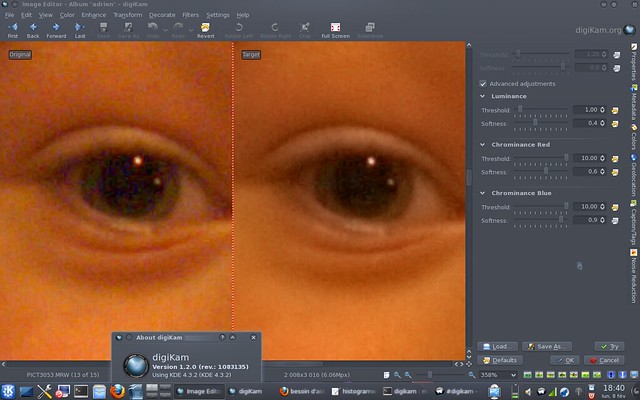 Noise reduction software. Photo by Caulier Gilles |
| OVR | Optical Viewfinder. Found on all DSLR cameras and some CSC cameras. Optical viewfinders use lenses, mirrors and pentaprisms to direct light from the scene direct to the photographer’s eye |
| RGB | RGB is a color space. Color Spaces are a kind of translator, that allow different digital devices to reproduce the same colors. On most cameras, the main Color Spaces are Adobe RGB and sRGB |
| TTL | Through the Lens. This refers either to the camera’s exposure metering system or a flash guns metering system. In both cases the exposure is read by a sensor that sits behind the lens of the camera, giving an accurate representation of that scene. |
| Tv | Time Value. Found on the mode dial of some cameras to denote shutter priority. In this mode, the photographer sets the shutter speed and the camera will calculate the correct aperture. More often seen as S on mode dials |
| WB | White Balance. Because all light has a certain color, our cameras need to determine what this color is. The WB settings in your camera will range from Automatic AWB to presets such as daylight and flash and setting a manual white balance. |

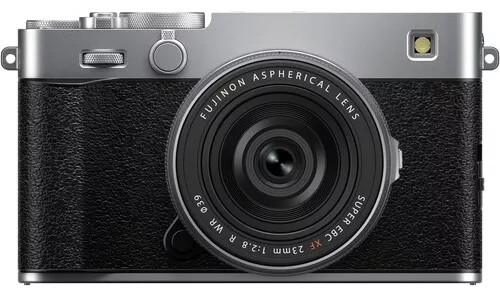



2 Comments
Good post however it looks bad on my Note 4 – Maybe it’s another failing of FlipBoard?
“Because ‘International Organization for Standardization’ would have different acronyms in different languages (IOS in English, OIN in French for Organisation internationale de normalisation), our founders decided to give it the short form ISO. ISO is derived from the Greek isos, meaning equal. Whatever the country, whatever the language, we are always ISO.” – from the ISO web site.
ASA – American Standards Association (replaced by American National Standards Institute, ANSI)